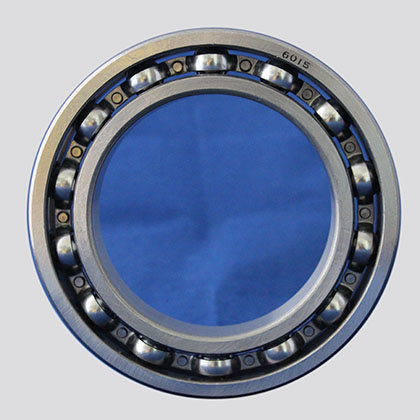



Categories: 6000 Series Bearings
[wpdatatable id=24 table_view=regular]
NSAR premium 6015 bearing is made in China and 6015 bearings Made of bearings steel,bearings steel with higher and more uniform hardness and abrasion resistance.The most rare is that of bearings steel with ultra-high hardness at the same time,have very strong elasticity.The assurance of hardness can prolong the service life of bearings.
The clearance of a rolling bearing refers to the maximum distance that the inner and outer rings of the bearing can move without load. It means that when the bearing is not assembled on the shaft or bearing box, one of the inner ring or the outer ring is fixed. The amount of movement when the unfixed party moves radially or axially. According to its moving direction, the radial movement is called radial clearance, and the axial movement is axial clearance.
1. The radial clearance of the bearing will change correspondingly under different conditions, so it can be divided into original clearance, assembly clearance and working clearance:
(1) The original clearance refers to the clearance in the free state after the bearing is assembled in a complete set before being assembled in machinery and equipment. It is determined by processing and assembly by the manufacturer.
(2) Assembly clearance is also called matching clearance. It is the clearance when the bearing, shaft and bearing seat are assembled but not yet in operation. Mainly because of interference assembly, either the inner ring is enlarged, the outer ring is reduced, or both, which makes the assembly clearance smaller than the original clearance.
(3) Working clearance, also known as effective clearance, refers to the actual clearance that exists in the bearing after the bearing is assembled on the main engine and operates stably with corresponding temperature rise under the corresponding load effect. The working clearance is smaller than the original clearance, but compared with the assembly clearance, it is mainly because the inner ring has the largest temperature rise and thermal expansion during operation, which reduces the bearing clearance. At the same time, it is mainly due to the effect of the load. , the contact between the rolling element and the raceway causes elastic deformation, which increases the bearing clearance. Whether it is actually larger or smaller than the assembly clearance depends on the comprehensive effect of these two factors.
2. When the bearing clearance is too small, it is easier for the bearing temperature to be too high. If the rotation speed is faster, there may be a burnout problem. If it operates in a high-temperature, high-speed environment for a long time, bearing locking problems may occur, causing damage to the bearing’s matching shaft or housing bearing position. When the bearing clearance is too large, the rotor will move during operation. Therefore, the size of the bearing clearance can directly interfere with the bearing’s operating accuracy, rotation flexibility, vibration, noise and other properties. Clearance that does not meet the standard will cause the bearing to not function in the initial stage. Therefore, for bearings used in vacuum transmission, the change in clearance caused by various reasons such as temperature changes and the transfer in the solid lubricated bearing need to be considered during the adoption process. Changes in clearance caused by film and trace amounts of wear debris.
3. Selection of clearance
(1) The radial clearance of ball bearings should be close to zero. The rigidity of roller bearings is larger than that of ball bearings. In order to avoid radial stuck due to the temperature difference between the inner and outer rings, the roller bearings should retain a certain radial clearance. For bearings that require rigidity or rotational accuracy, such as double-row angular contact ball bearings for automobile hubs, a certain preload force needs to be applied to form “negative clearance.”
(2) Light load, high speed, high precision and low operating temperature occasions
4. Measurement of clearance
The bearing clearance is measured using a special clearance measuring instrument, or a feeler gauge or dial indicator can be used to measure the bearing clearance.
Check with a feeler gauge to verify the maximum load position of the rolling bearing. Insert a feeler gauge between the rolling element and the outer (inner) ring at 180° to it. The thickness of the appropriately tight feeler gauge is the bearing radial clearance. This specific method is commonly used in spherical bearings and cylindrical roller bearings; use a dial indicator to measure, first set the dial indicator to zero, and then lift the outer ring of the rolling bearing. The reading of the dial indicator is also the radial clearance of the bearing. .
Copyright © NSAR Bearings. All rights reserved. Privacy Policy